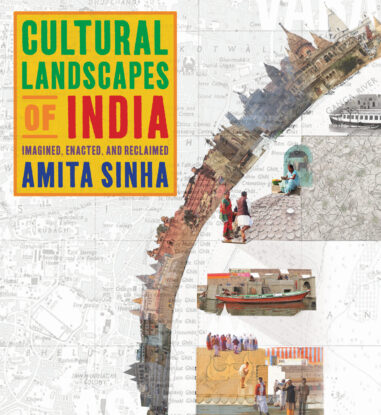Winner, 2022 J. B. Jackson Book Prize | Winner, 2022 Landscape Studies Initiative Award
Most people view cultural heritage sites as static places, frozen in time. In Cultural Landscapes in India, Amita Sinha subverts the idea of heritage as static and examines the ways that landscapes influence culture and that culture influences landscapes. The book centers around imagining, enacting, and reclaiming landscapes as subjects and settings of living cultural heritage. Drawing on case studies from different regions of India, Sinha offers new interpretations of links between land and culture using different ways of seeing—transcendental, romantic, and utilitarian. The idea of cultural landscape can be seen in ancient practices such as circumambulation and immersion in bodies of water that sustain engagement with natural elements. Pilgrim towns, medieval forts, religious sites, and contemporary memorial parks are sites of memory where myth and history converge. Engaging with these spaces allows us to reconstruct collective memory and reclaim not only historic landscapes, but ways of seeing, making, and remembering. Cultural Landscapes in India makes the case for reclaiming iconic landscapes and rethinking conventional approaches to conservation that take into consideration performative landscape as heritage.


